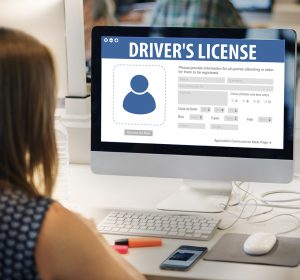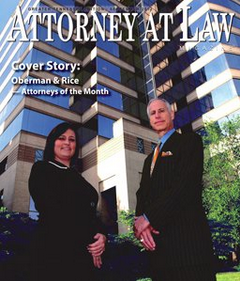Transcript of “The Walk and Turn Field Sobriety Test”
Author: Steven Oberman
Click here to listen to the podcast.
Originally Posted: May 8, 2011
Every day, law enforcement officers must decide whether to arrest a suspect for driving under the influence. They have to determine whether the person’s ability to drive is impaired below normal or whether their blood alcohol content exceeds the legal limit of .08%. One of the tools they use to make this decision is the standardized field sobriety test battery, recognized by the International Association of Chiefs of Police and the National Highway Traffic Safety Administration (which I will later refer to as NHTSA). This battery consists of 3 tests: the horizontal gaze nystagmus, the walk and turn and the one leg stand tests.
This is your host, Steve Oberman, and in this episode I will provide a summary of the standardized walk and turn test. As a certified DUI Detection and standardized field sobriety test instructor, I am aware that it takes days of classroom and laboratory setting training to thoroughly understand the intricacies of even one of the standardized field sobriety tests.
Today, though I will provide an overview of the walk and turn test you may have observed being given on the roadside or watched on television. This podcast will make a lot more sense to you if you have first listened to my previous podcast entitled, “The History of Field Sobriety Tests.” So, if you haven’t already listened to that episode, I recommend you do so before continuing.
Now, allow me to describe to you the procedures and scoring of the walk and turn test.
The first concern in this test is finding an appropriate place to administer the test. The walk and turn test requires a designated straight line, and should be conducted on a reasonably dry, hard, level, non-slippery surface. There should be sufficient room for suspects to complete nine heel-to-toe steps. Furthermore, individuals wearing heels more than two inches high should be given the opportunity to remove their shoes.
The original research indicated that individuals over 65 years of age, or with back, leg or middle ear problems had difficulty performing this test.
In the walk and turn test, the subject assumes a heel-to-toe stance with the subject’s arms down at her side. Specifically, the subject is told to place her left foot on the line, and then place her right foot in front, touching heel to toe. The subject is to maintain this position until the officer tells her to begin walking.
The officer should next continue the instructions, telling the subject to take nine heel-to-toe steps down a designated line, turn around and take nine heel-to-toe steps back up the line. Prior to the manual published in 2000, the line was supposed to be a real line on the ground. This could be achieved by using a line painted on the roadway or parking lot, a straight crack in the pavement, or alongside a vehicle so the subject could have a reference to follow. Starting in 2000, though, the manual allowed for the subject to be instructed to use an “imaginary” line. Good defense lawyers will often ask how the officer knew if the subject was using the officer’s imaginary line or the subject’s imaginary line.
The turn is not a pivot, but instead is made by taking a series of small steps with one foot, keeping the front foot on the line. The officer should demonstrate three steps of the walk, the correct manner to make the turn, then three steps back. While walking, the subject is to keep her arms at her side, watch her feet at all times, count her steps out loud, and once the walking begins, not stop until the test is complete.
Once the subject begins, the officer is to look for one or more of eight specific mistakes while the subject performs the test. NHTSA refers to these mistakes as “clues.” These clues include:
- Failing to maintain balance while listening to the instructions;
- Starting before the instructions are finished;
- Stopping while walking;
- Failing to touch heel-to-toe;
- Stepping off the line;
- Using arms to balance;
- Turning Improperly; and
- Taking an incorrect number of steps.
There are many more details to learn about these clues (such as missing heel-to-toe by less than ½” is not counted as a clue, but that type of training is too lengthy for a podcast like this.)
The subject is to be observed from a safe distance and the officer is to limit movement while the subject performs the test so as not to distract the subject during the test.
After the test, the officer must score the subject’s performance. The training manual states that if the subject exhibits two or more clues, the officer may classify the subject’s blood alcohol content as above the legal limit. It is important, though, that if a clue is observed more than once, it is only counted as one clue. For instance, if a subject fails to touch heel to toe for all 18 steps, it is only counted as one clue.
In the original research the walk and turn test was determined by NHTSA to accurately indicate that a subject’s blood alcohol level is above .10% approximately 68% of the time. NHTSA also found it is possible to combine the results of the horizontal gaze nystagmus test and walk-and-turn test in a “decision matrix,” and achieve 80% accuracy (the horizontal gaze nystagmus test is explained in another episode). Subsequent research of the standardized field sobriety test battery has been reported to accurately indicate that a subject’s blood alcohol level is above .10% 91% of the time and a blood alcohol content of .08% as high as 95 % of the time. However, as you may have guessed, I take great issue in the manner in which those studies were conducted and the conclusions that were reached.
So, now you have learned more about the procedures and scoring of the walk and turn test, which is part of the National Highway Traffic Safety Administration’s standardized field sobriety test battery. This test is given by an officer so that a better foundation for an opinion of impairment or estimated BLAC may be made before an arrest decision is reached. This is your host, Steve Oberman, inviting you to join us next time to learn more about the issues relating to the crime of Driving Under the Influence of an Intoxicant.
We hope you enjoyed listening to the DUI law podcast1 produced by the Oberman and Rice Law Firm. You may read about related legal matter on our websites at https://tndui.com/ and http://www.duiknoxville.com or visit our blog at http://www.tnduicenter.com. You may also speak to one of our lawyers by calling (865) 249-7200. Until next time, remember to drive safely.
Portions of this podcast were taken from Mr. Oberman’s text, DUI: The Crime and Consequences, Published by West/Thomson Reuters, 2011.See https://www.tndui.com/oberman-dui-textbooks#tndui
Featured Posts

 April 12, 2024
April 12, 2024
New DUI Law Alert–Work Release Requirement Update
The Tennessee Legislature passed several new laws that became effective on January 1, 2024. One DUI related law involves the Tennessee Work Release Program. Work release is a form of probation that may be used, in certain circumstances, after a person has […]
Read More
 April 08, 2024
April 08, 2024
Reinstating Your Tennessee Driver’s License
If the Tennessee Dept. of Safety and Homeland Security has suspended or revoked your driver’s license, you are not allowed to drive again until you have obtained a valid driver’s license. This means that you cannot reuse your old driver’s […]
Read More
 March 27, 2024
March 27, 2024
Tennessee Highway Patrol Traffic Enforcement and Sobriety Checkpoints
The Tennessee Highway Patrol has planned several Sobriety Checkpoints (also commonly referred to as a “DUI Roadblocks”) throughout this spring in East Tennessee. Motorists in Campbell County can expect a DUI Roadblock on March 29, 2024 on State Route 116 at […]
Read MoreContact
Office
Oberman & Rice
550 Main Street
Suite 730
Knoxville, TN 37902
Phone Number
(865) 249-7200
(865) 540-1696 (fax)
GPS Coordinates
Long: 35.970504
Lat: -83.914776
Useful Links
contact us today for a free consultation
We reply to non-urgent after-hours requests for consultation within 24 hours. For after-hour emergencies, please call us at (865) 249-7200.














